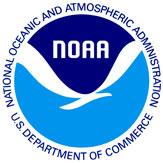NOAA Fisheries is seeking comments on a new Procedures Directive outlining a process for transitioning to improved recreational fishing catch and effort survey methods. 
It establishes and describes the role and responsibilities of a Transition Team, the general transition approach when new recreational fisheries catch and effort survey designs are implemented, and an example of a transition plan outline. Because these transitions will have an effect on marine fisheries, we are seeking public input on how we plan to address them.
To view the full guidance document and Procedural Directive, please click here. The deadline for comments is: July 26, 2015. Comments can be submitted by email to NMFS.MRIP@noaa.gov, please reference "Procedural Directive" in the subject line.
Overview The goal of the Procedural Directive is to clarify and standardize the process for determining when new, more statistically valid survey designs are ready to be implemented to replace legacy survey designs, and to efficiently integrate appropriately calibrated statistics into fishery science products and fishery management measures.
The process has grown out of lessons learned from previous implementation of improvements and the steps currently underway to transition from the Coastal Household Telephone Survey (CHTS) to the new mail-based Fishing Effort Survey (FES).
Ensuring the appropriate science to meet the needs of managers and stock assessors. The transition process in this document outlines the necessary steps and activities needed to ensure a smooth transition to a new survey method and properly incorporate new data into science and management processes.
The first step in the process is to develop a transition plan for the new design that describes the most appropriate processes for transitioning from historical estimates to estimates derived from improved sampling and estimation designs.
Although each transition plan will be unique to the circumstances it addresses, each will contain the same basic components:
1. Benchmarking: The newly designed survey should be conducted side-by-side with the legacy survey to allow measurement and evaluation of consistent differences in the statistical estimates produced. During this benchmarking period, statistical estimates produced by the legacy design are still considered the "best available scientific information" for use in fishery stock assessments, establishing overfishing limits and Annual Catch Limits (ACLs), monitoring catches relative to ACLs and making management decisions.
2. Calibration model development: Differences between new design and legacy design estimates that are consistently unidirectional should be evaluated to determine possible sources of bias to explain those differences.
3. Re-estimation of historical catch statistics: Once a calibration model has been developed, independently peer-reviewed, and approved, the model should be used to generate a corrected time series of recreational catch statistics that were generated by the legacy design.
4. Incorporation of new estimates into stock assessments and economic analyses: The revised catch statistics derived from the calibration model should be incorporated into stock assessments and economic analyses as soon as possible to provide the most accurate assessments of stock status, produce new ACLs for use in fisheries management, and update information relevant to sector allocations and economic impacts.
5. Incorporation of new estimates and ACLs into management actions: As soon as revised catch statistics and new assessment results become available, management should begin to use both for decision making.
To view the full guidance document and Procedural Directive, please click here. To comment, please send your ideas to NMFS.MRIP@noaa.gov, please reference "Procedural Directive" in the subject line.


 Advertising
Advertising